Fascia board rot repair is more common than we would like. The fascia boards are very susceptible to water. Once the boards get wet, deterioration sets in quickly. They may seem like a minor component of your home exterior but they are very important.
Let’s look more closely at what they are, why they are important, and how they get damaged. Then we will discuss how to fix fascia boards and prevent recurring problems too.
What is a fascia board?
We call the vertical board around the perimeter of your roof fascia board. You’ll find gable fascia attached to the roof rafters and regular fascia behind your eavestrough sections.
Most homes use wood for fascia but it should be sealed or covered with aluminum fascia to protect it from moisture.
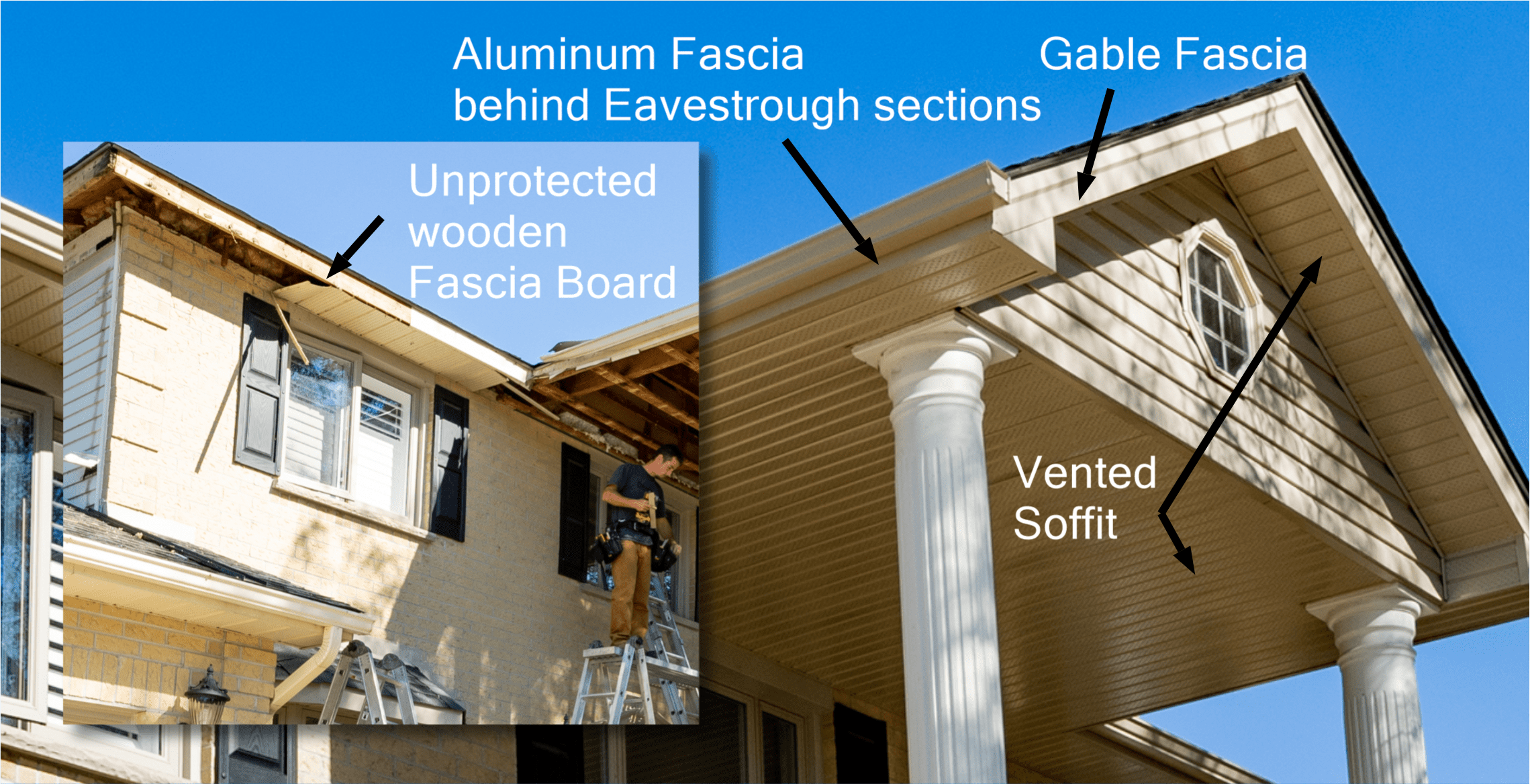
To create custom aluminum fascia, we custom bend the flat stock sheet of heavy gauge aluminum on an aluminum brake to the exact dimensions of the fascia board. Then we add it to the outside of the wooden board for protection. This also adds visual appeal when matched to other exterior finishes.
Alternatively, you could use composite wood for your fascia board, which may resist moisture better than regular wood, but it would be significantly more expensive. We do not recommend plastic or vinyl fascia boards.
What does the fascia board do?
Fascia boards also close off your attic and help prevent water and animals from entering your home. They create a smoothed edge contributing to the finished look of your home. And they also provide a place to secure eavestroughs using gutter brackets when installing a gutter system.
If you have rotten fascia boards, your gutter system is at risk, along with your roof. If these elements of your home exterior do not function well, you are at risk of water entering your attic, seeping through walls and down into your foundation.
What causes damage to the fascia board?
Moisture or water damage are the primary issues requiring fascia board rot repair. If you did not install or maintain your gutter system properly, or you did not protect the boards themselves, you risk damage.
It is important to inspect your home exterior regularly to prevent or fix issues that could grow into even bigger problems
Inspection Checklist
- Check to see if you need your gutters cleaned. Clogs could be the culprit. Is the water channelling properly into the eavestroughs and into the downspouts?
- Look for damaged shingles or roof leaks. Is there a drip edge installed under the bottom edge to help direct water into the eavestroughs properly?
- Inspect the actual fascia boards for proper sealing or trimming.
- Confirm you don’t have debris build-up, mould, fungus, or algae infecting your fascia boards or roof.
- Check for cracks resulting from changing temperatures, water, or age.
- Look for signs showing animals or insect damage who may have chewed their way inside.
- Inspect your home for structural issues, causing bowed or bent fascia boards.
- Confirm you don’t have any small holes allowing moisture to enter.
Options for fascia board rot repair
Sometimes you only need to repair a section of fascia. If you locate a small area affected by a leak, we may be able to cut out and replace damaged fascias. We just need to make sure it spans at least two rafters so it’s strong enough to support your gutters.
Other times, if it’s just a few tiny holes, the fascia repair may only require some sealant on the existing fascia board. But if you have more significant problems like rotted fascia, bowing or cracking or even just age, it’s best to replace all the boards to ensure bigger issues don’t develop.
Replacing your fascia not recommended for DIY’ers
When you replace fascia board, you must use proper equipment and safety procedures. Removing the gutters and replacing them correctly is absolutely essential for water to flow off your roof properly and prevent future damage.
Choosing the right fascia boards and protecting them is critical. Be sure to seal or trim the boards completely to prevent exposure to moisture and water. We recommend covering your fascia board with aluminum fascia for protection and style.


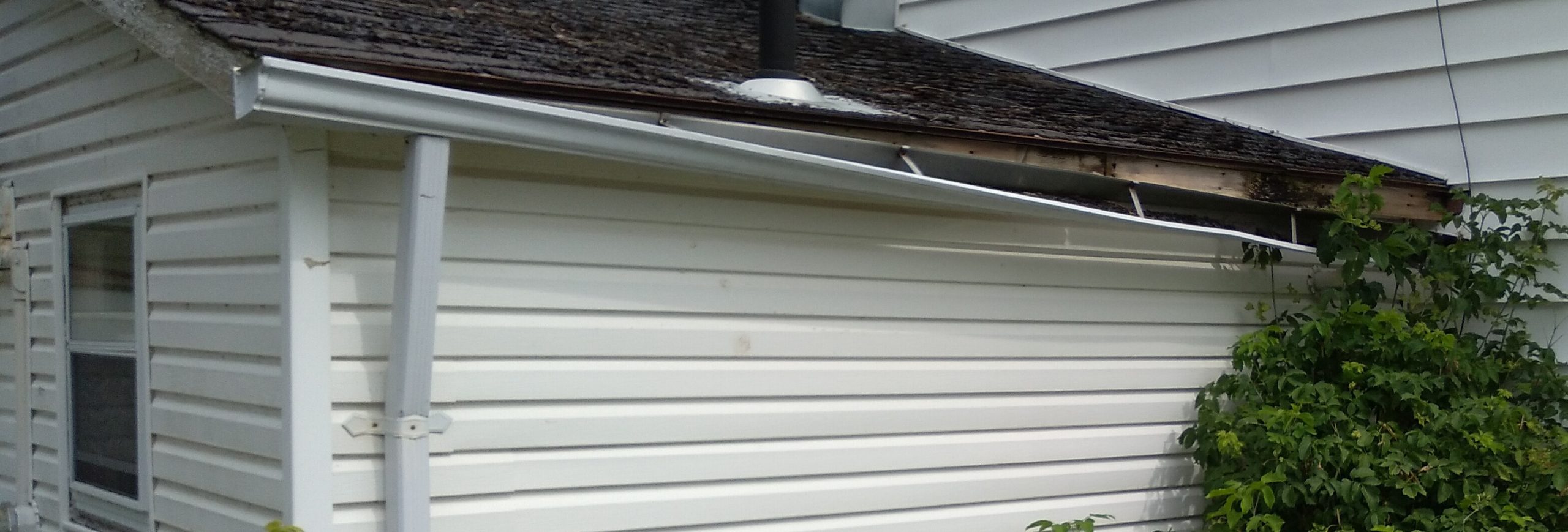


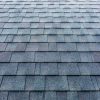
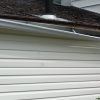

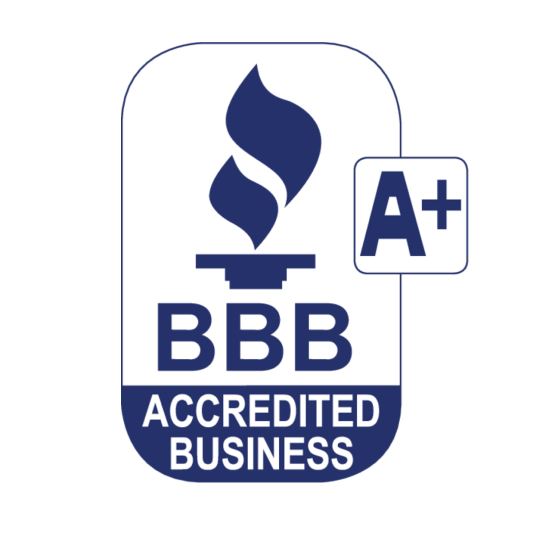


Recent Comments